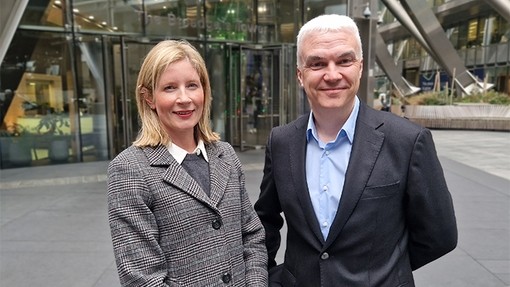Trade marks and threats actions – not so easy…

Details
On 12 January 2018, the High Court handed down its judgment in the matter of W3 Limited -v- easyGroup Ltd [2018] EWHC 7 (Ch). The dispute arose from the suggestion that W3 Ltd (W3) had infringed the EU trade mark of easyGroup Ltd (easyGroup) by using the sign ‘EasyRoommate’.
Background
W3 established EasyRoommate in the UK in 1999 with a view to offering an online property sharing service. easyGroup Ltd subsequently filed a trade mark application for the mark ‘EASY’ in 2000, covering various advertising and temporary accommodation services.
Since 2003, easyGroup had made a number of complaints to W3 regarding its use of the EasyRoommate sign and seeking undertakings in respect of its use. W3 found that these complaints were deterring potential investors in its business so in 2007, and without opposition from easyGroup, it registered a stylised version of the name EasyRoommate as a UK trade mark in respect of certain services.
The complaints about its branding persisted, however, and so in 2015, W3 commenced a claim for groundless threats under section 21 of the Trade Mark Act 1994. easyGroup then brought a counter claim for passing off and infringement of various trade marks containing the prefix ‘EASY’ which W3 defended on the basis that the marks had not been validly registered in relation to the relevant services.
Decision
The threats claim was dismissed on the basis that easyGroup had not made an actionable threat against W3. However, the court also dismissed the counterclaim holding that easyGroup’s trade marks had been invalidly registered in relation to the relevant services.
In making his decision, Arnold J first looked at the validity of easyGroup’s ‘EASY’ trade mark.
Validity
W3 argued that the ‘EASY’ trade mark had not been validly registered on the grounds that it was purely descriptive. easyGroup disputed this and, in any event, considered that the mark had acquired a distinctive character through its use.
It was held that the word ‘EASY’ denoted a quality or characteristic of the services it was used to describe. Arnold J found that when used in relation to ‘advertising’ and ‘temporary accommodation’, it conveyed to the average consumer the message that the services were easy to purchase and so was descriptive of those services. It was precisely the sort of word which should be free for use by all traders.
easyGroup was also unable to demonstrate that ‘EASY’ had acquired a distinctive character in relation to advertising or temporary accommodation services. Whilst it was accepted that many consumers had come to associate logos comprising the prefix ‘easy’ with another word with an upper case first letter, in a particular font and in white against orange with easyGroup, it did not follow that they would have the same reaction in relation to the word ‘Easy’ alone and without stylisation.
In addition, the use of ‘EASY’ in relation to advertising services had been very modest, and easyGroup failed to demonstrate any use in relation to temporary accommodation. The ‘EASY’ mark was, therefore, found to have been invalidly registered in relation to the relevant services.
Infringement
easyGroup had sought to argue that W3 had infringed each of easyGroup’s EU trade marks through use of the EasyRoommate signs in the UK. Since it was concluded that the ‘EASY’ trade mark had been invalidly registered in relation to the services relied on, the claim for infringement of that trade mark also fell away.
easyGroup failed to establish that any of the remaining EU trade marks it relied upon had acquired an enhanced distinctive character through use in relation to advertising or temporary accommodation services at the relevant dates. This was because Arnold J did not accept that ‘EASY’ was the distinctive and dominant component of the EU trade marks or that those trade marks formed part of a family of marks, since they had not been used enough at that point. There was also little risk of confusion between the ‘Roommate’ part of W3’s marks and the easyGroup marks as they were visually, aurally and conceptually different.
easyGroup also attempted to rely on the reputation it had established in its marks, however, the only mark which it had established a reputation in was easyJet. Whilst it was accepted that many consumers would draw a connection between the EasyRoommate sign and the easyJet trade mark, the reputation in that trade mark was confined to passenger airline services. There was no reason to assume that EasyRoommate benefitted from any transfer of image from easyJet or that EasyRoommate gained an unfair advantage from the reputation of easyJet in any other way.
As a result, it was held that there had not been an infringement by EasyRoommate under Article 9(1) (b) or Article 9(1)(c) of the EU Trade Mark Regulation 2007/09.
Threats
As to the claim for groundless threats, W3 contended that three letters sent to it on behalf of easyGroup constituted groundless threats. There was no dispute that the letters constituted a threat of proceedings for trade mark infringement in respect of W3’s provision of advertising and accommodation sharing services, however, W3 had sought to argue that the scope of the threat was widened by the inclusion of draft undertakings and particulars of claim.
This was rejected on the basis that no reasonable reader would have thought that the breadth of the undertakings meant that easyGroup was threatening to bring a claim of such breadth. The reasonable reader would have understood this to be impossible and, therefore, concluded that the threat of proceedings related solely to W3’s provision of the relevant services.
Comment
One of the key aspects of the claim was the determination of the date at which the infringement claim should be assessed. easyGroup contended that the relevant date was in June 2009 whilst W3 argued that the date should be 15 August 2000. This was important because at the later date, easyGroup’s EU trade marks had acquired a stronger reputation and, therefore, a more distinctive character thus making a stronger case for infringement.
Another notable feature was the judge’s affirmation that in order to establish the distinctiveness of a mark, it must be shown that the mark is inherently distinctive in all EU member states. This sets a high bar for establishing the distinctiveness of a mark.
The decision is an important one for registered trade mark owners who are using marks in practice in a different form from that which it is registered. There is a very high threshold that must be met to prove distinctiveness in such circumstances.
For more information on trade marks, passing off or threats actions, please contact our author, Daniel Keating.





